Here’s something no one ever tells you about building self-confidence when you’re growing up:

It’s hard as shit.
I mean, not literally. (If your shit is literally hard, you should see a doctor immediately.) But you know what I’m saying.
A lot of men – particularly younger guys – feel held back by a tendency to look inward and over-think every aspect of their lives rather than taking action. And as with anything else, if you think about your own self-confidence long enough, your brain will inevitably find its flaws.
Striving for More
I felt this pressure firsthand throughout much of my 20s. I wanted to be bigger, stronger, more athletic, more charming, more courageous, more attractive, better dressed, better looking, smarter, more intuitive, bigger, stronger, less repetitive… the list goes on.

I had so many goals (by which I actually mean insecurities) that it felt like I was drowning. I had no idea where to start.
After years of treading water, I eventually managed to swim my way out—but it was pretty exhausting. I tried damn near everything I could to build self-confidence, and while a lot of it was an embarrassing waste of money (in hindsight, those hypnosis CDs were probably bound to fail), some of it really did help me become more confident and self-assured.
To help make your path to self-confidence shorter (and hopefully less expensive) than mine, here are the top eight things I recommend.
And if you’re looking for an even more comprehensive roadmap for confidence, check out my Amazon #1 best-selling book Man in Command: How Shy, Quiet, Self-Doubting Guys Become Strong, Charming Self-Confident Men.
Self-Confidence for Men:
8 Impactful Things You Can Do to Improve
1. Define Your Goals
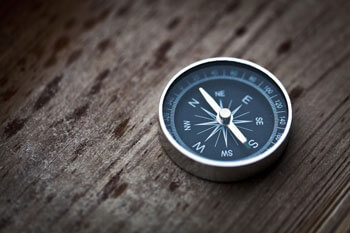
If you don’t know where you’re going, you’ll never get there.
The first thing that finally helped me take control of my self-confidence and get over the feeling that I was drowning in unfulfilled ambition was to really narrow down on exactly what it is I wanted.
In my case, I realized I wanted to improve in four key areas of my life:
Mindset
I wanted to develop a confident, optimistic attitude that would allow me to take more risks, and make me more resilient if I failed. Rather than form a goal and immediately think, “I can’t do it” I wanted to become the type of guy who thought, “I can absolutely do it – and I will.”
Body
Like most scrawny kids who get into their 20s only to feel like they still have the body of a 12-year-old, I wanted to add some muscle to my frame, get stronger, and build a body I could be proud of.
Social Skills
I used to be terrified of just about any situation that involved talking to strangers: job interviews, parties, dates, taking a class, joining a team – I could go on and on. I knew that this fear held me back, and I wanted to develop the sort of social skills that would make these interactions easier, and maybe even (dare I say it) enjoyable.
Style
And finally, I was interested in clothes and noticed that guys who were well dressed often tended to be the most confident, too. So I resolved to learn how to improve my look and style myself in a way that would make me feel more secure.
Your goals, of course, may be slightly different than mine. But no matter what you want to achieve, narrowing down on your goals is the first and most important step to getting started.
Try This:

Here’s a trick I learned from the book The Six Pillars of Self-Esteem by Nathaniel Branden.
As fast as you can, write down at least five possible completions to this sentence: “At my highest ambition, I would…”
Don’t pause to think about it, and don’t just do it in your head. Actually get out a pen and write it down. Spitting out answers as fast as you can will help you get over the paralysis by analysis that plagues many of us, and writing them down will cement them in your mind and strengthen your resolve to achieve your desired outcomes.
2. Learn More About Your Mind

One thing that compounded my lack of confidence was the feeling that I was the only one dealing with insecurity. It felt like everyone else had their shit together, or at least more together than me, and I was alone in wallowing in self-doubt (to say nothing of self-pity).
Too nervous to reveal my insecurities to anyone, my search for self-confidence led me to the self-help section of the book store, where, as I’ve written before, I proceeded to blow a lot of money on books that proved to be pretty useless.
Many dollars later, I learned how to separate the wheat from the chaff (and then Googled that phrase to figure out what it means), and discovered that while the self-help section may be replete with nonsense titles and bullshit feel-goodery, the very best books really can help you better understand how—and why—your mind works the way it does.
A Buddhist monk once said, “If you want to change your mind, you have to first understand it,” and this maxim certainly proved true for me. It was only after reading books about psychology, sociology and anthropology that I came to understand that I am not the product of my thoughts.
Yes, I may sometimes feel nervous, pessimistic and insecure. But that doesn’t mean I am nervous, pessimistic and insecure. As Viktor Frankl writes in one of my favorite books, “In between stimulus and response, there is a choice.”
You can’t control what thoughts pop into your head; but you can choose how to respond to them.
3. Work Out Regularly…
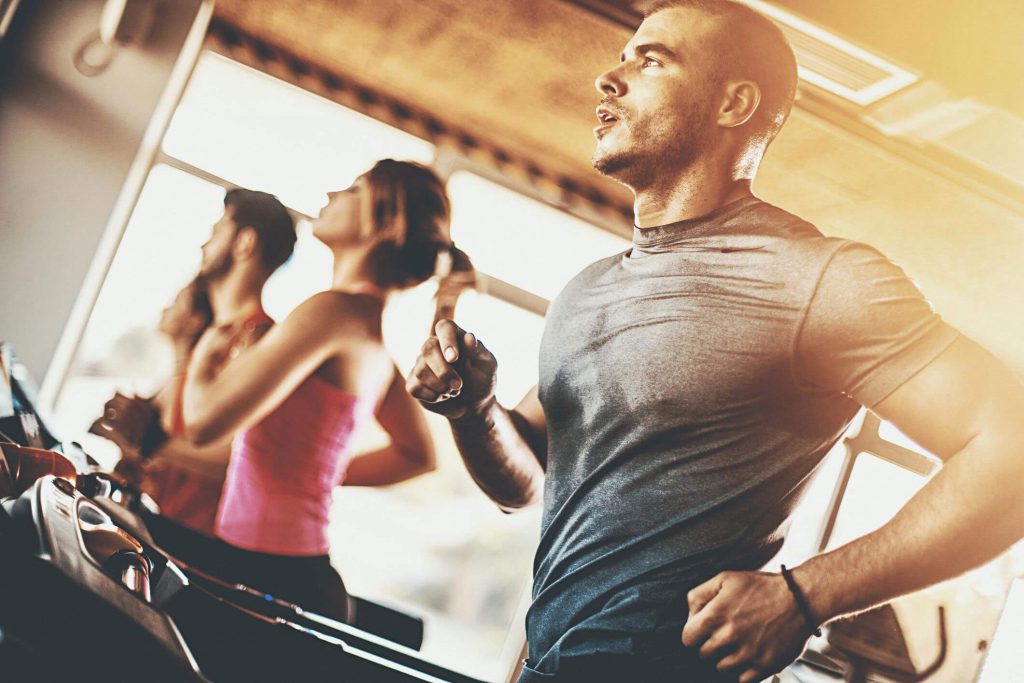
I’ve said it before and I’ll say it again: build a better body, build a better you.
Strangely, this is a benefit the mainstream fitness press often seems to ignore, at least on the men’s side of the industry. I spent years working at a fitness magazine, and I know firsthand the kind of language they use to lure your into working out:
“Build bigger arms!”
“Get ripped this summer!”
“Sculpt your shoulders!”
But it always amazed me how they neglected to mention what, to me, is one of the most obvious benefits to health and fitness: just how much damn better it makes you feel about yourself.
Of course, from endorphins and dopamine to that undeniable sense of accomplishment, there’s no shortage of scientific explanations for why you feel good in the immediate after glow of a workout.
Empowering and Enduring
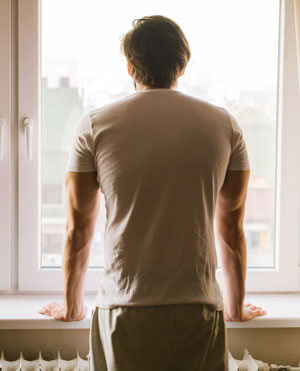
But what rarely gets mentioned is the feeling you get in between workouts: the enduring, empowering and character-building sense of confidence and pride that comes from being a person who regularly pushes his physical boundaries.
The health benefits of working out are great, but you can’t exactly feel yourself becoming less susceptible to heart disease or diabetes. What you can feel is an undeniable sense of pride every night when your head hits the pillow, knowing that you did something to push yourself in the right direction today.
That confidence then carries over to literally every other facet of your life. Have a big project coming at work? If you can get up at 6 a.m. to hit the treadmill, you can handle whatever your boss throws at you.
Want to land a date with a pretty girl? If you can push yourself to a personal best on the bench press, you can push yourself to go up and talk to her.
Want to turn Baywatch into a smash-success movie franchise? Alright, fine: there are some goals having a buff bod just can’t help you with.
Try This:
If you’re brand new to health and fitness, check out this article on how to start (and stick to) a workout plan for a step-by-step guide to making fitness a habit.
4. …and Think of Food as Fuel
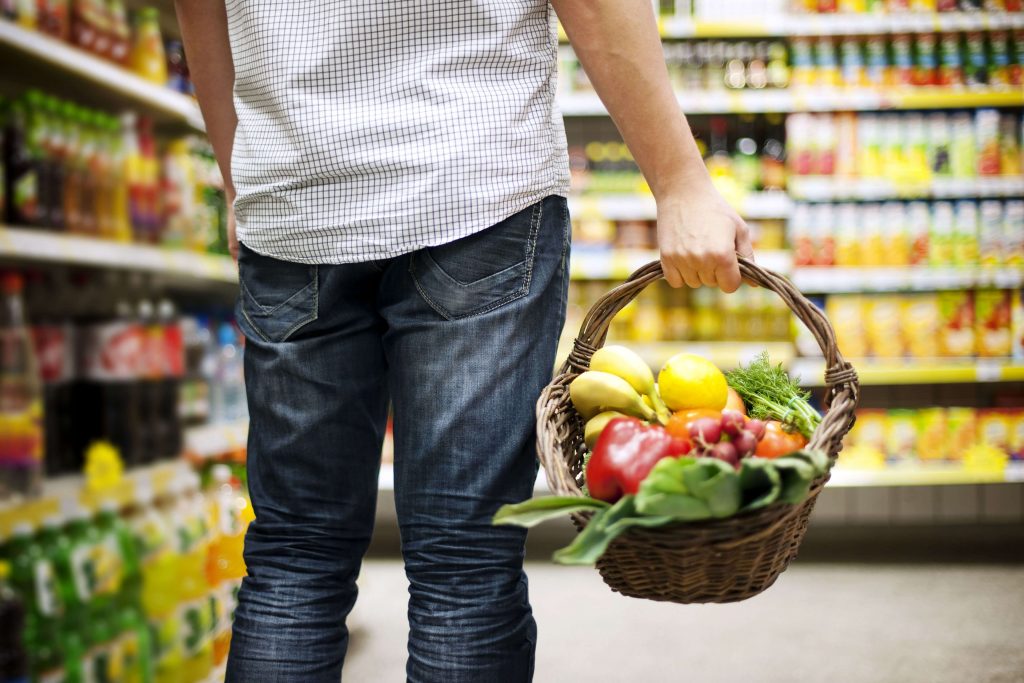
While we’re on the habit of improving yourself physically, keep in mind that working out seven days a week won’t help you look or feel better if you frequently stop at the drive-thru on the way home from the gym.
Exercise is crucial, but when it comes to feeling healthier, happier, more capable and confident – which is to say, better in every conceivable way – your diet is the key.
You probably already know this, of course, but the problem is that nutrition science is complex, and you frequently hear contradictory things from various sources. That’s why I tend to take advice from not just the most credentialed, but also the most discerning sources I can find.
In my deep dive into self-improvement literature, I’ve found few sources more discerning than Gallup researcher Tom Rath. In his book Eat Move Sleep, Rath reveals everything he’s learned about health after a lifetime spent pouring over data and applying it to his own life. (Rath has a rare disease that prevents his body from fighting off cancer, so if he doesn’t do everything he possibly can to optimize his health, the consequences could be dire.)

While the book is packed with expertly researched and well sourced health advice, he summarizes his nutritional philosophy pretty succinctly, citing his sources along the way:
“The quality of what you eat matters far more than the overall quantity. This is the primary finding from a landmark Harvard study that tracked more than 100,000 people for two decades,” he explains.
As a general guideline, he offers: “find foods with less fat, fewer carbohydrates, and as little added sugar as possible.”
Try This:
Rath suggests a simple move that will help you make better choices:
“Set a goal of eating foods that have one gram of carbs for every one gram of protein. I started doing this several years ago,” he explains, “and it is a great shortcut when scanning items at a grocery store or restaurant.”
You can also check out this post for more detail about how to work healthy food choices into your life.
5. Dress for Success

If you’ve read other blog posts on this site you’ve probably noticed how often I fall back on a truism that’s as cliché as it is undeniable: when you look good, you feel good.
One of the most immediate and effective ways I’ve found to give yourself an instant confidence boost is to dress in a way that makes you feel more poised, polished put together.
For my money, there are few better feelings than pulling on a suit jacket or blazer that fits like a glove—in that moment, a man could be forgiven for feeling like he’s James Bond, on his way to stop bad guys and seduce an international beauty or two.
Of course, while the blazer works for me, I also understand that it might not be for everyone. The key is to identify the look that you find the most confidence-boosting and learn how to nail it.
Try This:
Follow the steps laid out in this post to learn how to create your own Personal Style Profile, the unique, personalized look that will make you feel like your most comfortable, confident self.
And if you really want to up your game, check out this post to discover 14 things any guy can do to look more handsome.
6. Sharpen Your Social Skills

Kurt Russell may play a living planet (whatever that means) in Guardians of the Galaxy Vol. 2, but the truth is that no man is an island.
Human beings are inherently social creatures. As much as the myth of masculinity would have you believe that men are supposed to be self-sustaining loners who could survive for decades on our own – basically Wolverine from the X-Men, to use another comics reference – the truth is that the ability to forge strong relationships is vital not just to our self-confidence, but our very survival.
Back in the days of hunter gatherers, you wanted to travel in a pack to reap the benefits of strength through numbers and deter predators. If you were a hunter, you wanted some gatherers around to collect what you couldn’t, and vice versa. Plus, the more potential mates you surrounded yourself with, the more likely you’d be to fulfil your biological urge to procreate.

In our (slightly) more civilized society, you still want to travel in a wolf pack to reap the benefits of strength through numbers – but today it has less to do with deterring predators and more to do with fulfilling emotional needs.
Being able to surround yourself with potential mates has proven equally as enduring, though your interest in procreation may be slightly lower than that of your ancestors.
All of which is to say, the more capable you are of communicating with other people and building relationships, the more confident and fulfilled you’ll feel.
Try This:
If you’re particularly or shy, or just an introvert who finds socializing kind of exhausting (guilty!), check out these strategies for pushing yourself ever-so-slightly outside of your comfort zone and becoming more social.
I spent years learning how to come out of my shell and talk to people, and it’s been one of the most rewarding endeavors of my life. Check out this post to learn 13 of the most hard-won socializing lessons, without having to dedicate a decade of your life to experiments in awkwardness.
7. Start Small
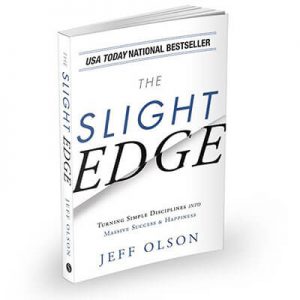
One of the most straightforward and no-nonsense self-improvement books I’ve found is called The Slight Edge, by Jeff Olson.
In it, Olson makes a simple but profound point that’s far too easy to overlook: the way you achieve any goal – whether it’s increasing your self-confidence, your muscle mass, your net worth or anything else – is one small step at a time.
Go back and look at that picture of the wolf pack above. Is it possible to go from looking more like Zach Galifianakis to more like Bradley Cooper? It is, but there’s no way it’s going to happen over night, or even over a month.
The only way to make big changes in your life is by repeatedly taking the small steps that will lead you there, slowly but surely.
This is what Olson calls the slight edge: the ability to take those small – but cumulatively consequential – actions, day in and day out.
The slight edge is forcing yourself to strike up small talk with the barista when you grab your morning coffee, even if you’re shy and normally afraid to talk to her.
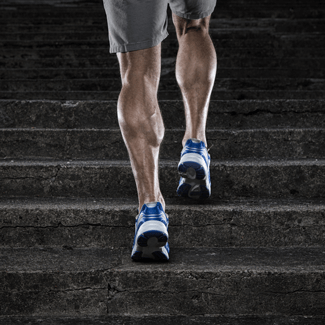
It’s dropping down to do 10 push ups, 10 squats and 10 sit ups each day to slowly, but surely, build the habit of exercising into your routine.
It’s taking a couple shirts to the tailors each week until your entire wardrobe fits, feels and looks better than it did just a few months back.
It’s taking one step at a time and doing the little things that add up to a huge difference in your life.
If you want to change a little, do a little, then stop. If you want to change A LOT, do a little – then do it again, and again, and again.
Try This:
Pick up Jeff Olson’s book The Slight Edge to learn how to habitually do the little things that will add up to big changes in your life.
8. Help Other People
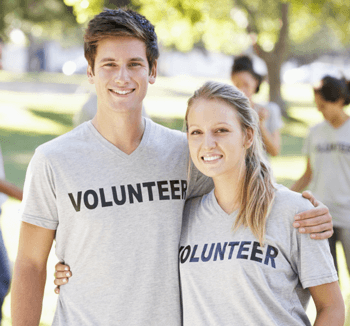
And finally, if you want to feel better about yourself, one of the most effective (and by far most altruistic) ways is to forget about yourself entirely.
Instead, focus on others. Even if you don’t have the highest self-esteem in the world, chances are you have certain skills or advantages that others lack, which you could leverage to improve their lives.
Maybe you’ve got computer skills that you take for granted. Why not see if you can teach a computer literacy course and help someone improve their chances of landing a job?
Or maybe you’ve got some extra cash lying around – find a worthy charity that you can make a donation to.
Or maybe you’re just a youthful and able-bodied person. Why not make a point of finding five people today who you can hold a door for, or help across the street, or pick up an item when you see someone has dropped it?
It’s true that you have to consider your own strengths and weaknesses and use the slight edge to improve each day. But it’s also true that too much navel gazing can make you forget you’re far from the only person on this planet, and far from the only one who deserves to live a better life.
Set aside time, either each day or at least each week, to focus on the needs and wants of others, and you’ll (rather conveniently) start to feel better about yourself.
Try This:
Make a list of ways you could improve the life of another human being — and remember that there’s no act of altruism too small here. It could be anything, even a gesture as small as smiling at five people each day.
Once you’ve got your list, make a plan for implementing it. Schedule it in your calendar so it goes from something you should do to something you will do.
You’ll be glad you did.
More Resources ↓
More Confidence & Self-Esteem Resources From Irreverent Gent:
- How to Be the Man in the Arena, According to Brene Brown
- The 8 Best Things Guys Can Do to Build Self-Confidence
- 7 Self-Confidence Tips Guys Need to Know – and 7 Myths to Stop Believing
- Answering Some Common Questions on Self-Confidence
- 31 Powerful Signs of a Confident Man
- The Challenges & (Many) Benefits of The NoFap Timeline
- 187 Proven, Powerful & Positive Morning Affirmations
- 100+ Awesome & Inspiring Self Confidence Quotes for Men


Great list! I love The Slight Edge and the whole concept of making small, incremental gains.
Thanks Ryan! Yeah, it’s awesome to think that (pretty much) anything is possible if you just break it down into small enough chunks and then take action on them.
I really like your writing and the points you make here. Totally agree with your overall message that self-confidence is something we have to create our own confience.
Thanks Michael! I’m definitely a big believer that self-confidence isn’t something you’re born with, it’s something you build.
great advice, and really inspiring stuff. thank you for sharing.
You’re welcome Vincent! (And thank you for the encouragement, sir.)
What’s the best type of exercise if I want to build self-confidence? I’m 22, skinny, no muscle.
Hey Robert,
I was in the same boat when I was in my early 20s. For me, starting a weightlifting program (and accompanying nutrition program) helped me build muscle and feel better about myself. Check out Bodybuilding.com as a great place to start, and remember that it’s a marathon, not a sprint. You may not see results right away, but stick with it. As long as you’re doing the right things, the results will follow. Good luck!
This was a good read. Keep up the good work!
Thanks so much Khalid! Really appreciate the feedback and support.
Hi Dave,
Any advice for a people pleaser who wants to stop being intimidated by others and express his own self-interests? Big fan of your stuff, thanks in advance.
Hey Jason,
I think a lot of us have the urge to please other people (at least, I know I do).
One great tip I got from the 7 Habits of Highly Effective People and definitely recommend is to write out a Personal Mission Statement. Creating a Mission Statement helps you clarify and codify who you are, what your values are, and how you’re going to behave in a way that’s in accordance with your values.
Having that kind of clarity gives you a bedrock foundation, which in turn gives you strength of purpose and confidence. In short, you’ll worry a lot less about what other people think of you when you know you’re acting in accordance with your highest values and ambitions.
Try it out and let me know how it goes!